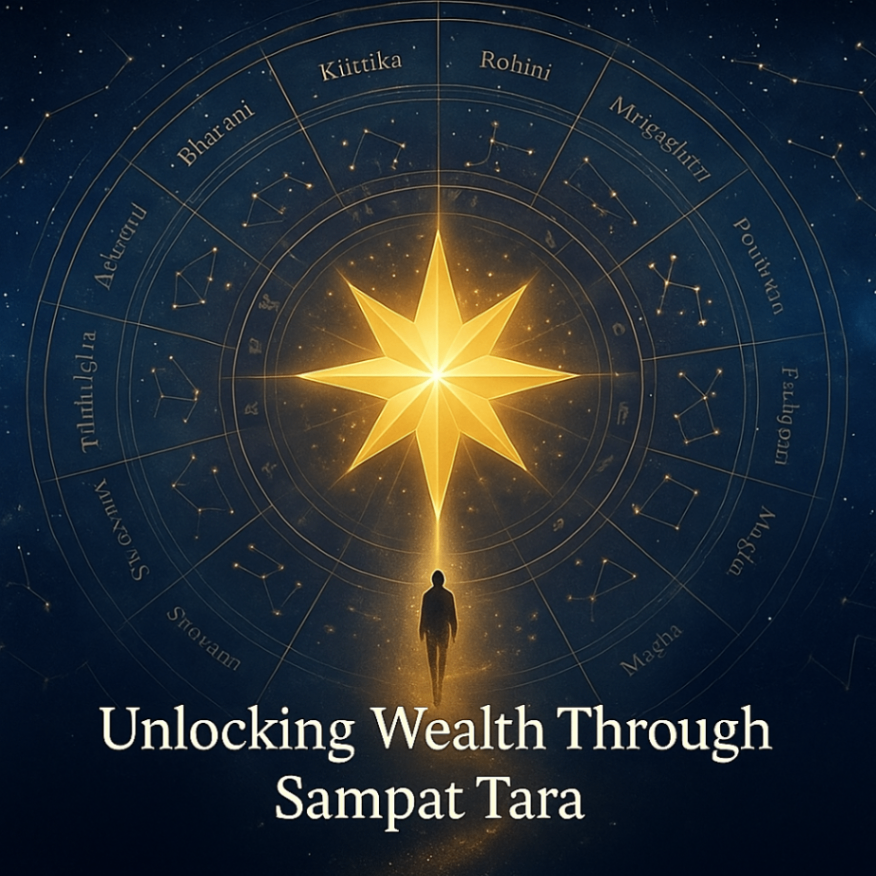Vedic astrology, one of the worlds oldest astrological systems, delves deep into the cosmic influences that shape human destiny. At the heart of this ancient science lies the concept of Nakshatras, or lunar mansions. These celestial constellations are fundamental to understanding the intricate workings of astrology and how the positions of celestial bodies impact our lives.
What Are Nakshatras?
Nakshatras are 27 (sometimes 28) unique segments of the sky through which the Moon passes in its approximately 27-day journey around the Earth. Each Nakshatra spans 13 degrees and 20 minutes of the zodiac, and they collectively cover the entire 360 degrees of the celestial sphere. These lunar mansions are not merely astronomical divisions but are imbued with rich mythological stories, specific deities, symbols, and attributes that influence various aspects of human life.
The Two Systems of Nakshatras
The concept of Nakshatras can be approached through two primary systems:
The 27 Nakshatra System: This system divides the zodiac into 27 equal parts, each representing a Nakshatra. It is based on the Moons average daily motion and assumes a uniform speed.
The 28 Nakshatra System: Recognizing that the Moons motion is not perfectly uniform, this system includes an additional Nakshatra called Abhijit, making it 28 in total. Abhijit is considered highly auspicious and is often used in selecting favorable timings for important events.
The Lunar Mansions and Their Significance

Each Nakshatra is associated with specific qualities, deities, symbols, and cosmic energies. They are further divided into four quarters or Padhas, which influence the finer aspects of personality and destiny.
Agni (Fire) Padha: Represents Dharma (righteousness).
Prithvi (Earth) Padha: Denotes Artha (wealth and material pursuits).
Vayu (Air) Padha: Corresponds to Kama (desires and relationships).
Jala (Water) Padha: Signifies Moksha (liberation and spiritual pursuits).
For example, if the Moon is in the first Padha (Agni) of a Nakshatra, the individual may have a strong inclination towards moral duties and ethical living.
Counting and Starting Points of Nakshatras
The starting point of Nakshatras can vary based on different astrological traditions:
Krittikaadi Scheme: Begins counting from Krittika Nakshatra, aligning with the Moons exaltation point in Taurus.
Ashwiniadi Scheme: Starts from Ashwini Nakshatra, corresponding to the Suns exaltation in Aries.
Ardraadi Scheme: Commences from Ardra Nakshatra, associated with the north lunar node, Rahu.
These starting points reflect different cosmological perspectives, emphasizing creation, sustenance, and transformation within the universe.
Nakshatras and Planetary Influences
Planets placed within Nakshatras bring together their inherent qualities with the attributes of the Nakshatra, creating a unique blend of energies:
Sun in Agni Padha: Enhances leadership qualities and a sense of purpose.
Moon in Jala Padha: Deepens emotional sensitivity and spiritual yearning.
Mars in Vayu Padha: Amplifies ambition and dynamic action in relationships.
Understanding these placements helps astrologers interpret how planetary energies manifest in an individuals life, influencing personality traits, life events, and karmic patterns.
The Role of the Moon in Nakshatras
In Vedic astrology, the Moon is of paramount importance as it represents the mind and emotional nature. The Nakshatra in which the Moon is placed at the time of birth is crucial for determining mental predispositions and innate tendencies.
Minds Focus: The Moons Nakshatra indicates where ones mental energies are primarily directed, whether towards material pursuits, relationships, spiritual growth, or ethical duties.
Life Stages and Nakshatras: The progression through Nakshatras can also reflect different life stages, each governed by a planetary ruler:
Ketu: Early childhood, characterized by innocence and a lack of self-awareness.
Venus: Adolescence, marked by the development of desires and aesthetic appreciation.
Sun: Young adulthood, focusing on identity and self-expression.
Moon: Mid-adulthood, emphasizing emotional connections and nurturing roles.
Mars: Mature adulthood, driven by ambition and the pursuit of goals.
Rahu: Periods of confusion or transformation, questioning ones path.
Jupiter: Wisdom years, seeking knowledge and spiritual understanding.
Saturn: Later life, dealing with limitations and the culmination of karma.
Mercury: Old age, returning to simplicity and childlike curiosity.
Special Nakshatras and Their Unique Energies
Certain Nakshatras hold special significance due to their distinct characteristics:
Abhijit Nakshatra: Often considered the 28th Nakshatra, it spans from 6°40 to 10°5320 in Capricorn. Abhijit is associated with success and victory and is believed to be an auspicious time for initiating important ventures.
Gandanta Points: These are transitional zones between water and fire signs, namely Pisces-Aries, Cancer-Leo, and Scorpio-Sagittarius. Planets positioned here are thought to indicate karmic knots or significant life challenges that require resolution.
Nakshatras and the Four Goals of Life
The Nakshatras are also linked to the four Purusharthas, or aims of human life:
Dharma (Duty): Upholding righteousness and fulfilling moral responsibilities.
Artha (Wealth): Pursuit of prosperity and material well-being.
Kama (Desire): Seeking pleasure, relationships, and emotional fulfillment.
Moksha (Liberation): Striving for spiritual enlightenment and freedom from the cycle of birth and death.
Each Nakshatra aligns with one of these goals, influencing an individuals priorities and life path.
Nakshatras and Mind-Body Connections
The Nakshatras are not only metaphysical concepts but also relate to specific body parts and health aspects:
Ashwini Nakshatra: Governs the head and brain, influencing cognitive functions.
Bharani Nakshatra: Associated with the reproductive organs, affecting creativity and procreation.
Krittika Nakshatra: Linked to the eyes and vision, both physical and metaphorical.
Understanding these connections allows for holistic interpretations of health and well-being in astrological consultations.
Combustion and Healing in Nakshatras
When the Sun transits through a Nakshatra, it can cause combustion, affecting the energies of that lunar mansion:
Combustion Effects: The Nakshatras qualities may be burned up or diminished, impacting areas of life associated with it.
Healing Remedies: Vedic astrology offers remedies to balance these effects, such as mantras, rituals, and offerings aligned with the specific Nakshatra and planetary influences.
For instance, if a Nakshatra associated with communication is combust, one might engage in practices that enhance clarity and expression to mitigate challenges.
Remedies for Combust Nakshatras
To mitigate the adverse effects of planetary combustion in Nakshatras, Vedic astrology prescribes specific remedies:
Sun Combustion: Offer water to Lord Shiva or perform rituals that involve cooling elements to soothe the fiery energy of the Sun.
Mars Combustion: Consume cooling foods like yogurt to balance the heat generated by Mars.
Ketu Combustion: Engage in spiritual practices, offer rice as a remedy, and focus on humility and surrender.
These remedies aim to harmonize the planetary energies and alleviate any negative influences on the mind and life circumstances.
Nakshatras and Cosmic Forces
The interplay between Nakshatras and cosmic forces shapes the destiny of individuals and nations:
Planetary Periods (Dashas): The timing of life events is influenced by planetary periods linked to Nakshatras, guiding the flow of experiences.
Collective Influence: Nakshatras also impact societal trends and global events, reflecting the collective consciousness at different times.
By attuning to these cosmic rhythms, individuals can align their actions with the universal flow, enhancing harmony and success.
Nakshatras and Spiritual Evolution

Nakshatras are not only about worldly aspects but also play a crucial role in spiritual evolution. They are linked to different Lokas or cosmic planes:
Bhu Loka: The earthly plane, associated with the first nine Nakshatras.
Bhuvar Loka: The intermediate plane, linked to the next nine Nakshatras.
Swarga Loka: The heavenly plane, connected with the last nine Nakshatras.
By understanding which Loka a person resonates with, based on their Moons Nakshatra, astrologers can provide insights into their spiritual inclinations and past life influences.
Practical Applications of Nakshatras
Nakshatras have practical applications in various aspects of life:
Muhurtha (Auspicious Timing): Selecting favorable Nakshatras for important activities like marriage, business ventures, and travel.
Name Selection: Choosing names based on the syllables associated with ones birth Nakshatra to enhance personal resonance.
Career Guidance: Identifying suitable professions aligned with the qualities of the dominant Nakshatra in ones chart.
Conclusion
The study of Nakshatras offers profound insights into the cosmic blueprint of human existence. By understanding the intricate attributes of these lunar mansions, individuals can gain deeper self-awareness, navigate lifes challenges more effectively, and align themselves with their true purpose.
Vedic astrologys rich tapestry, woven with the threads of Nakshatras, invites us to explore the celestial influences that shape our lives. It reminds us that we are intrinsically connected to the universe, and by harmonizing with these cosmic energies, we can unlock our fullest potential.




































